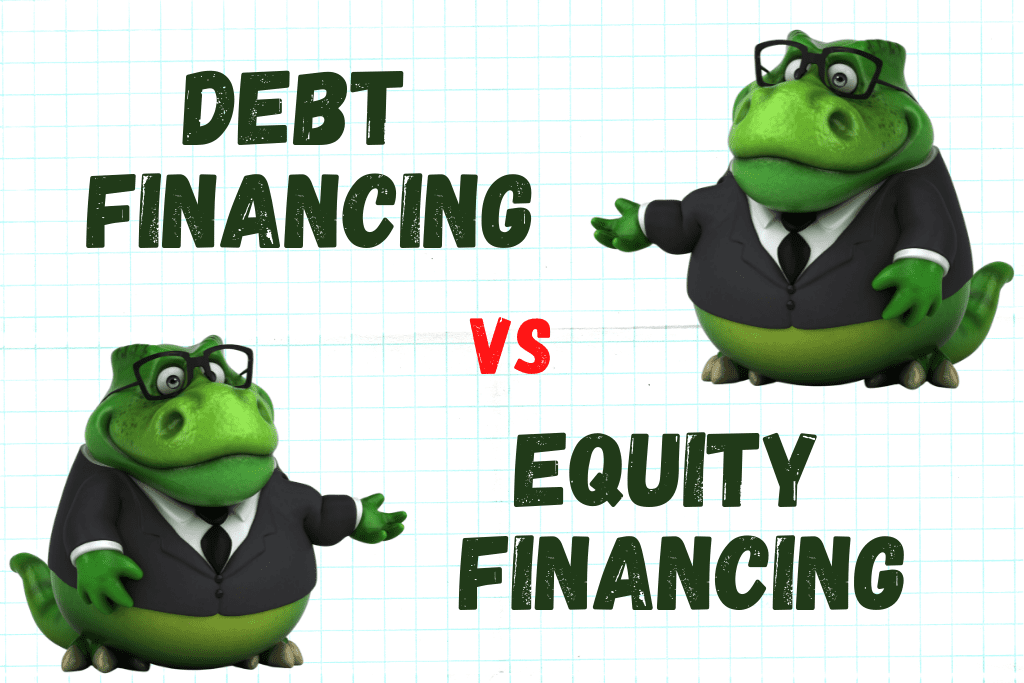When businesses needs funds to expand or grow the business, that capital can come from three sources:
- Funds from profits
- Funds from debt
- Funds from equity
Funding business growth from profits means the business reinvests its profits back into the business. Doing this means less cash is available for dividends or distributions to owners. It may also mean the business’s ability to pay its day-to-day bills may be impacted.
Because of this, businesses often seek funds from outside of the business to fund growth or invest in equipment. Those funds can come from debt or equity.
Debt Financing means the business increases its liabilities in exchange for the cash it needs. An example of debt financing is taking out a business loan from the bank. The business receives the cash and also takes on a liability.
Equity Financing means the business trades equity (ownership) in the company for the necessary cash. An example of equity financing is selling stock or taking on an investor. The business receives the cash and gives up a portion of the equity of the business.
For an overview of debt financing vs equity financing, watch this video:
Which is Better: Debt Financing or Equity Financing?
Determining whether to use debt financing and equity financing is part of the strategic financial goals of a business. Often it makes sense for a business to use a combination of debt and equity to finance growth.
Both debt financing and equity financing have advantages and disadvantages. Both provide the necessary working capital.
Debt financing comes with an obligation to repay the debt. Equity financing does not have an obligation to repay.
With debt financing, ownership in the business is not impacted. With equity financing, a portion of the ownership of the business is given.
The balance between debt and equity financing often comes down to what is accessible for a business.
A business that doesn’t sell its stock (meaning it is privately held) doesn’t have the option of raising capital through selling stock. A publicly traded business may not be an attractive business to investors because of a variety of reasons. Under those circumstances, the only option may be debt financing.
If a business already has a high level of debt, banks may not want to loan more money. For that business, equity financing may be the only option.
For more information about the relationships between debt and equity, check out this article:
-
What is Equity in Accounting and Finance?
In Accounting and Finance, Equity represents the value of the shareholders’ or business owner’s stake in the business. Equity accounts have a normal credit balance. Equity increases on the credit
-
What is Treasury Stock?
Treasury Stock represents a corporation’s stocks that were previously issued and sold to shareholders. The corporation reacquires the stock by purchasing the stock from shareholders. Treasury Stock reduces the number
-
What is Stockholders’ Equity?
Stockholders’ Equity is the difference between what a corporation owns (Assets) and what a corporation owes (Liabilities). Stockholders’ Equity is made up of Contributed Capital and Earned Capital. Contributed Capital
-
What is Paid in Capital?
What is Contributed or Paid-in Capital? Contributed Capital is also called Paid-in Capital. It includes any amounts “contributed” or “paid in” by investors or stockholders through purchasing of stocks or
-
What are Dividends? | Accounting Student Guide
What is a Dividend? A Dividend is a payout of earnings by a corporation to its stockholders. Dividends can be cash dividends or stock dividends. A dividend is paid per
-
What are Stock Splits?
A stock split occurs when a corporation’s board of directors decides to divide one share of stock into multiple shares. For example, a two-for-one stock split means that one share

